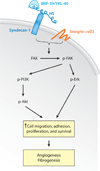Role of chitin and chitinase/chitinase-like proteins in inflammation, tissue remodeling, and injury
- PMID: 21054166
- PMCID: PMC3864643
- DOI: 10.1146/annurev-physiol-012110-142250
Role of chitin and chitinase/chitinase-like proteins in inflammation, tissue remodeling, and injury
Abstract
The 18 glycosyl hydrolase family of chitinases is an ancient gene family that is widely expressed from prokaryotes to eukaryotes. In mammals, despite the absence of endogenous chitin, a number of chitinases and chitinase-like proteins (C/CLPs) have been identified. However, their roles have only recently begun to be elucidated. Acidic mammalian chitinase (AMCase) inhibits chitin-induced innate inflammation; augments chitin-free, allergen-induced Th2 inflammation; and mediates effector functions of IL-13. The CLPs BRP-39/YKL-40 (also termed chitinase 3-like 1) inhibit oxidant-induced lung injury, augments adaptive Th2 immunity, regulates apoptosis, stimulates alternative macrophage activation, and contributes to fibrosis and wound healing. In accord with these findings, levels of YKL-40 in the lung and serum are increased in asthma and other inflammatory and remodeling disorders and often correlate with disease severity. Our understanding of the roles of C/CLPs in inflammation, tissue remodeling, and tissue injury in health and disease is reviewed below.
Figures




References
-
- Hartl D, Lee CG, Da Silva CA, Chupp GL, Elias JA. Novel biomarkers in asthma: chemokines and chitinase-like proteins. Curr. Opin. Allergy Clin. Immunol. 2009;9:60–96. - PubMed
-
- Coffman RL. Immunology. The origin of TH2 responses. Science. 2010;328:1116–1117. - PubMed
-
- Zhu Z, Zheng T, Homer RJ, Kim YK, Chen NY, et al. Acidic mammalian chitinase in asthmatic Th2 inflammation and IL-13 pathway activation. Science. 2004;304:1678–1682. - PubMed
Publication types
MeSH terms
Substances
Grants and funding
LinkOut - more resources
Full Text Sources
Other Literature Sources
Miscellaneous

